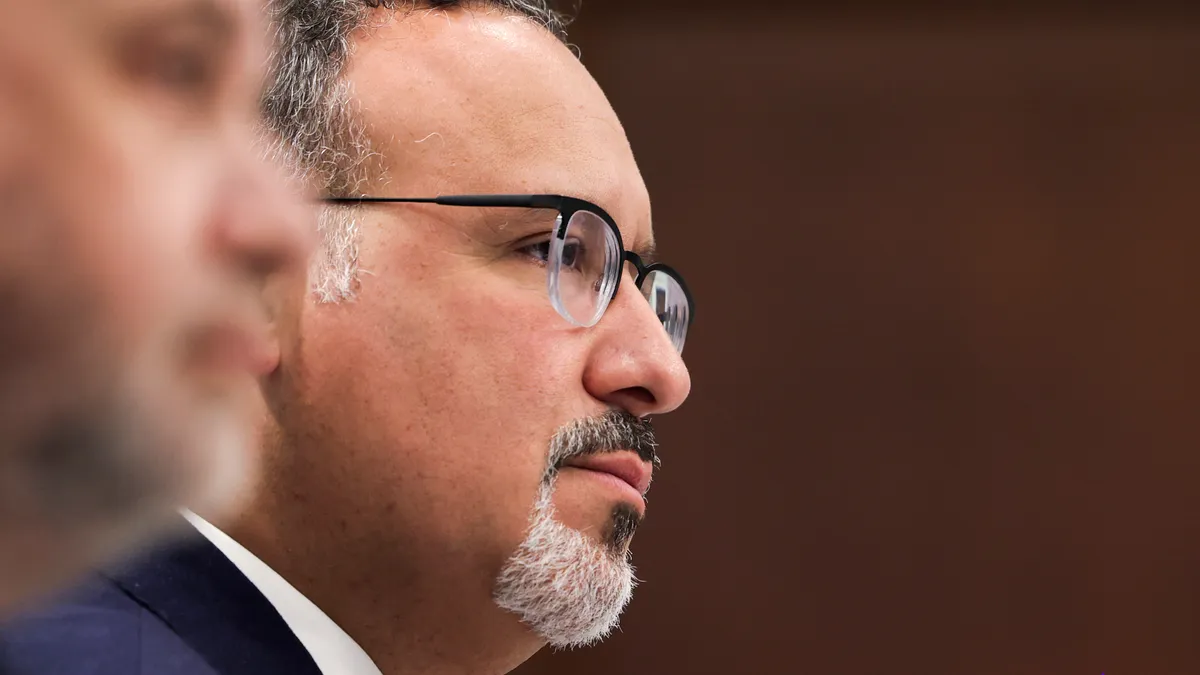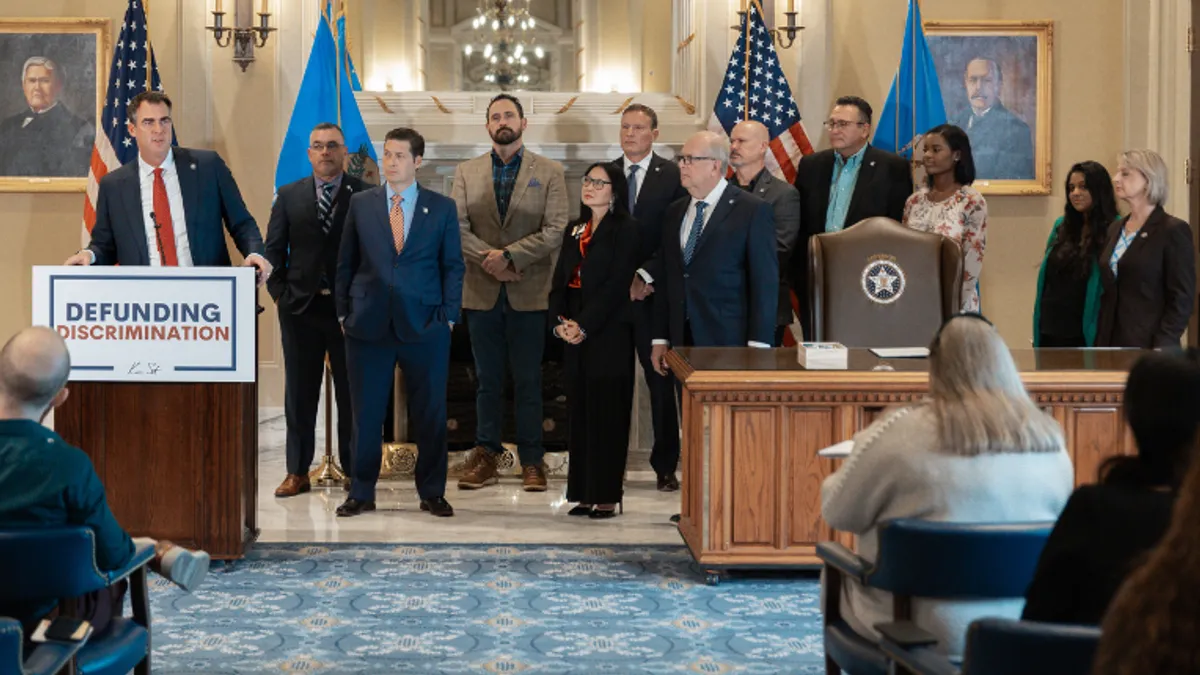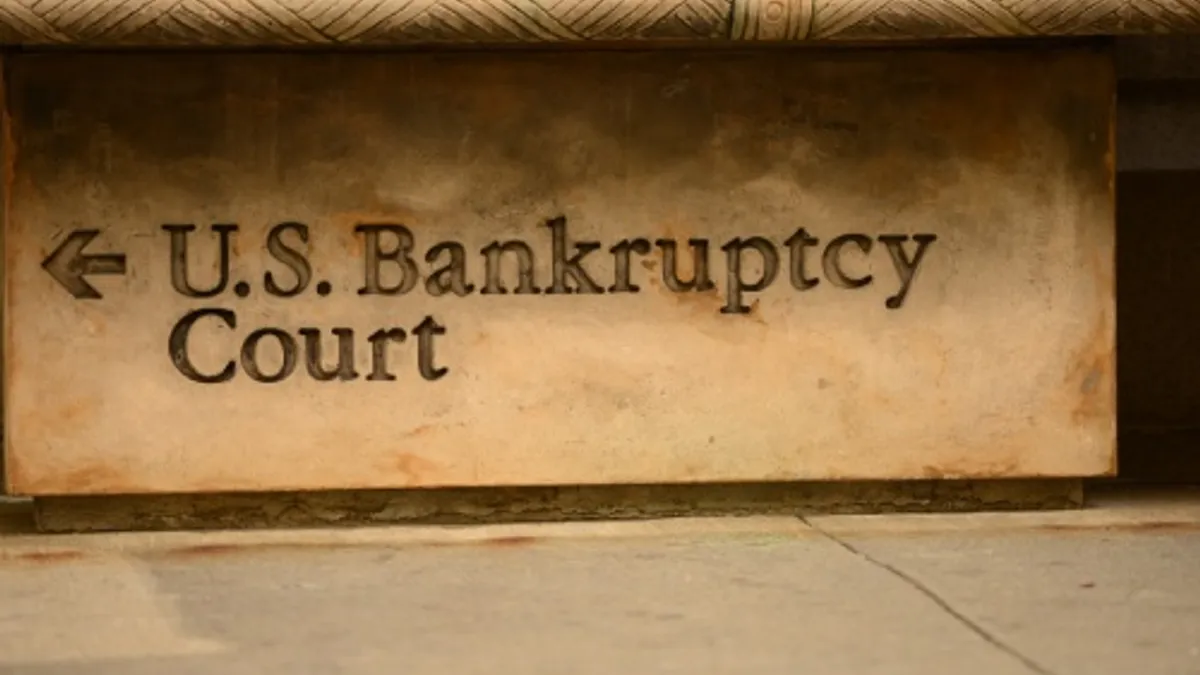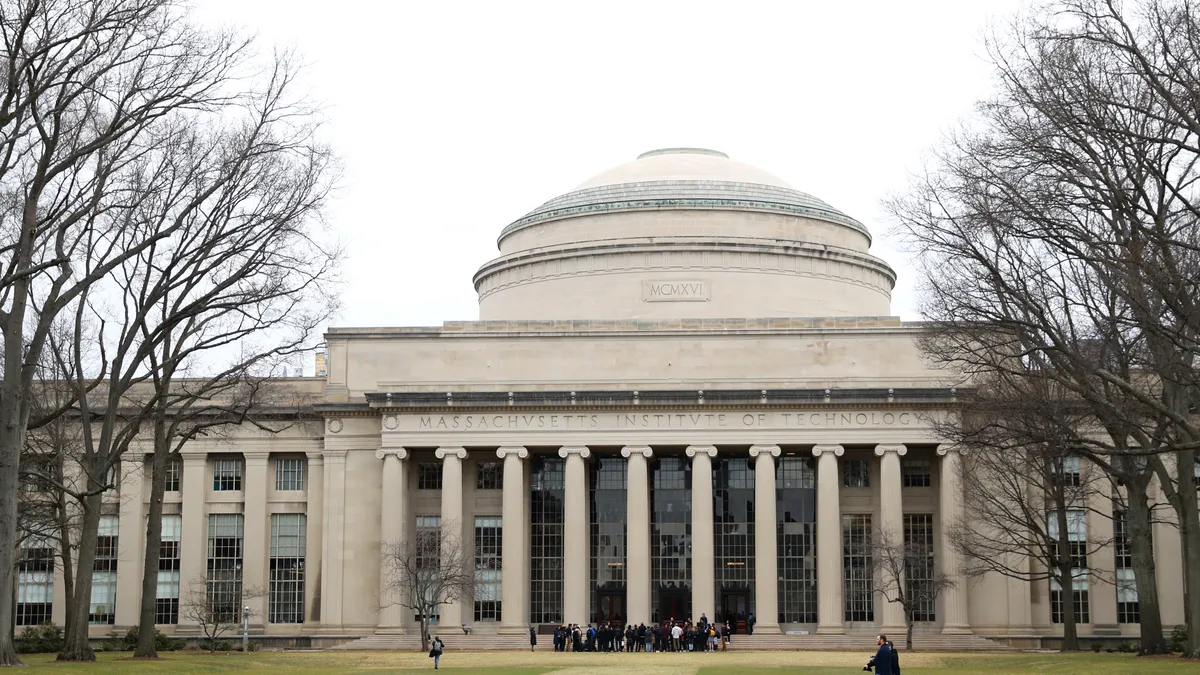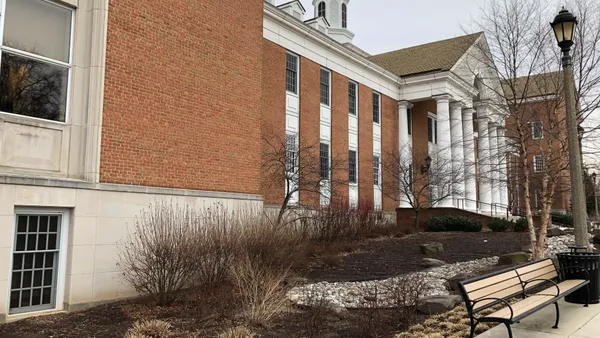To thrive — or even just survive — colleges must gather information about their students' motivations for enrolling and build strategies around it. That's according to Michael Horn, an education consultant and author who covers the future of learning and instruction.
In a new book, "Choosing College: How to Make Better Learning Decisions Throughout Your Life," out next month, Horn and entrepreneur Bob Moesta propose that people considering college believe it will meet one of five objectives — or "jobs" — for them and that understanding them is critical for an institution's success.
Those jobs are fairly straightforward, in the language Horn and Moesta use: get into their best school; do what's expected of them; get away; step it up; and extend themselves.
While students typically associate their college with one job at a time, it's not so straightforward for the institutions.
"If you look at the range of students, I would argue that every single institution is serving multiple jobs and therefore is not optimized around any of them," Horn said.
We talked with Horn, who also co-founded the Clayton Christensen Institute and is head of strategy for the Entangled Group, about what colleges can learn from their research.
Editor's note: This interview has been edited and condensed.
EDUCATION DIVE: Of the five jobs you describe, which are more or less popular today?
MICHAEL HORN: Our research didn't look at that over time, but I can make a few observations. The "step it up" and "extend themselves" jobs are the ones to pay attention to. Adult learners have become a bigger focus over the last 10 to 20 years, and institutions are going to have to figure out how to serve them better.
The "get into their best school" job is more sticky than people think because it's so emblazoned in the American narrative that you go to high school and then to college. Although the college-for-all conversation has lessened in intensity in the last couple of years, many people are still fed that narrative.
Data show the big change over time is that people are now going to college primarily to help them find employment, but when we talk to students they say that's what they've been told to say. And it's clearly on the minds of their parents. In this book is, we didn't figure out parents' "jobs" when they send their kids to college. And for students, a job itself is still a vague notion.
How can colleges reach that group of students?
HORN: It's going to be really hard to serve them successfully. These students are going through the motions — the success and satisfaction rates were abysmal from this job. If this is your core student, it's a tough place to be. I think it calls for innovation.
You describe Southern New Hampshire University as having two jobs: "get into their best school" and "step it up." If a college wants to begin the process of looking at these jobs, should they start with those two?
HORN: I think so. Those are strong motivators for why people go to college and they are highly successful ways to serve students. At the time the book references, Southern New Hampshire was targeting the traditional coming-of-age experience for the first job, and for the second it was targeting an adult student who has had more than enough coming of age experiences.
At the time, that was who was showing up on their campus and online. The university thought that if students were attending for two vastly different reasons and it was optimized only around the first one, then it ought to radically change how it serves the second. Today, there is more nuance around those jobs beyond demographics.
You note that two of the jobs are outcome-oriented and the other three are oriented around getting into school. Are those two groupings a starting point for thinking about working with students based on their jobs?
HORN: The moment the "get into their best school" people get into a college they've realized some success, and that has important implications for how a college designs the program. For the outcome-focused ones, a college should be clear about what that outcome is and set as linear a path as possible to achieve it.
There are some caveats, however. The "do what's expected of them" and "get away" jobs are each focused on getting into school, but one is intrinsically driven and one is extrinsically driven. That's also the case with the "get into their best school" job, in that some students are extrinsically motivated (it's all about the rewards and prestige) and others are intrinsically motivated (they are deeply passionate about it).
You write that the high cost of college has to do with the complexity of its task. Honing their focus could lower costs, but is that a risk? What happens if colleges choose wrong or trends shift?
HORN: It absolutely poses risks but so does inaction, and we know that's not going to work for many schools. Their cost structures are out of whack with the revenue they're able to attract. They have to act. I take a portfolio strategy: have a few different programs that are separate from each other and right-size them for who you are serving.
However, Hampshire College is in a very different circumstance from Harvard University. Similarly, a big public flagship can operate several purpose-driven programs and serve multiple jobs. But they could separate them by program to make different service lines, which would lower administrative overhead.
Ultimately, "strategy" means being able to allocate resources in a dynamic environment. The world is not static.




